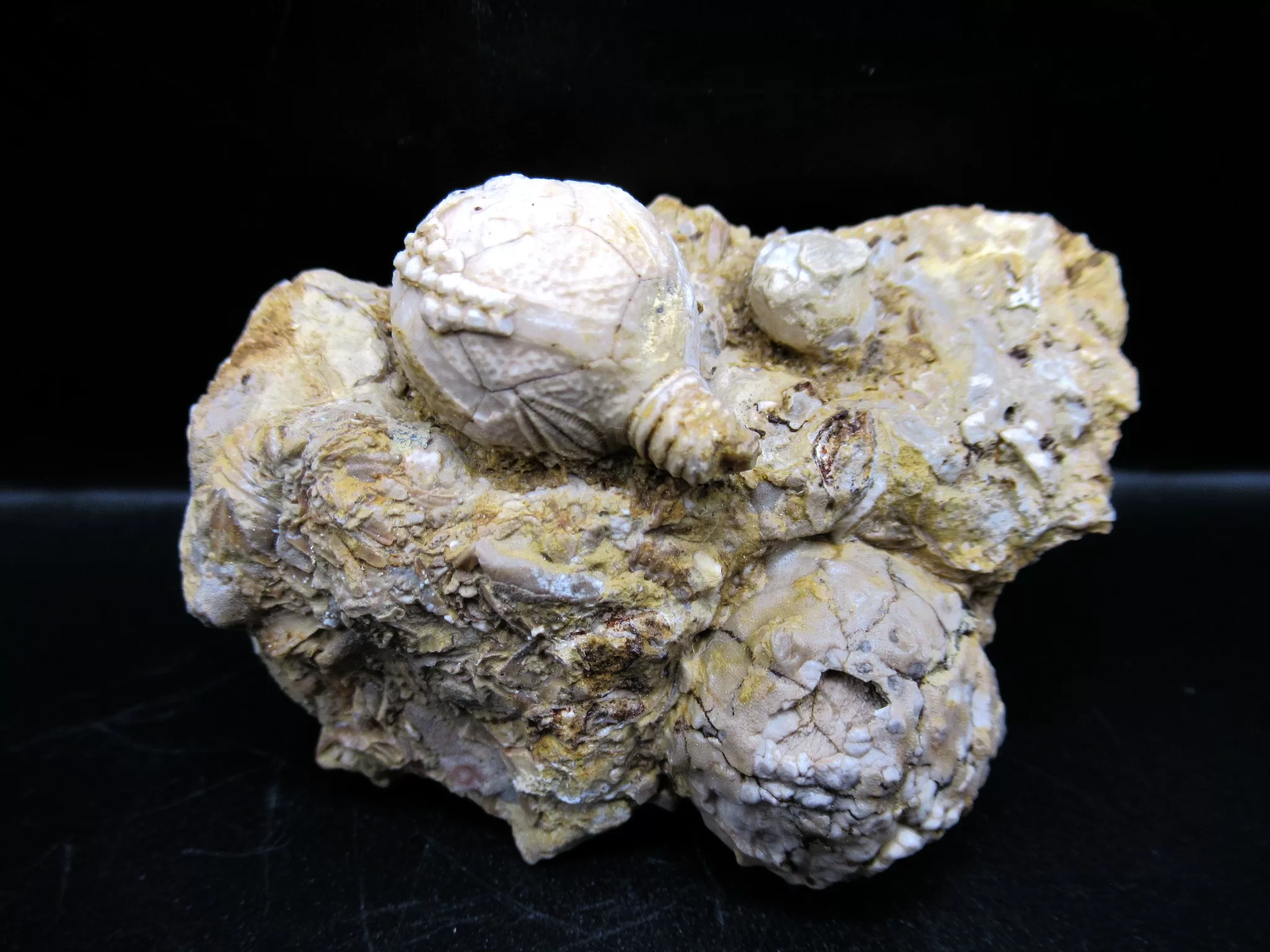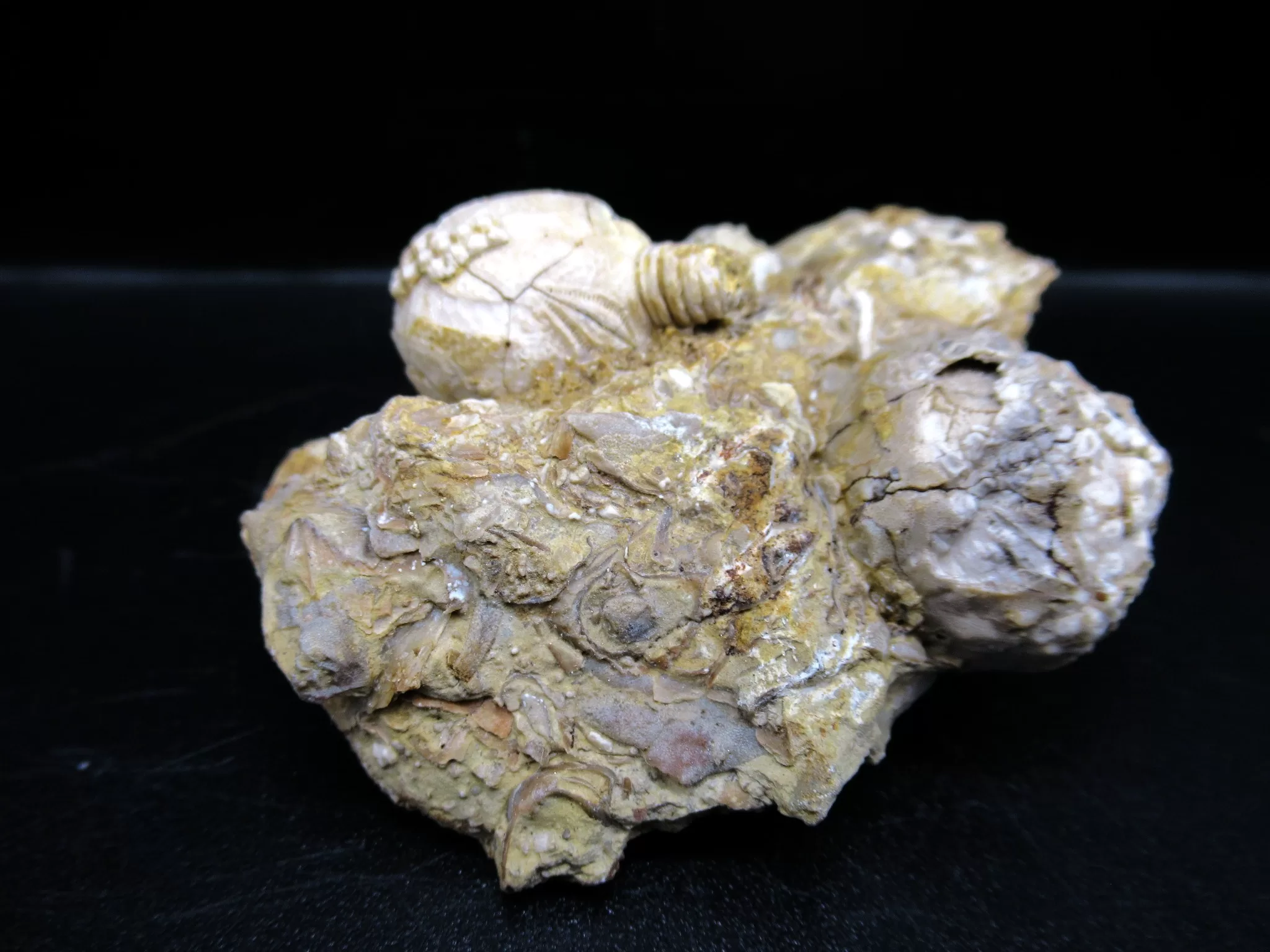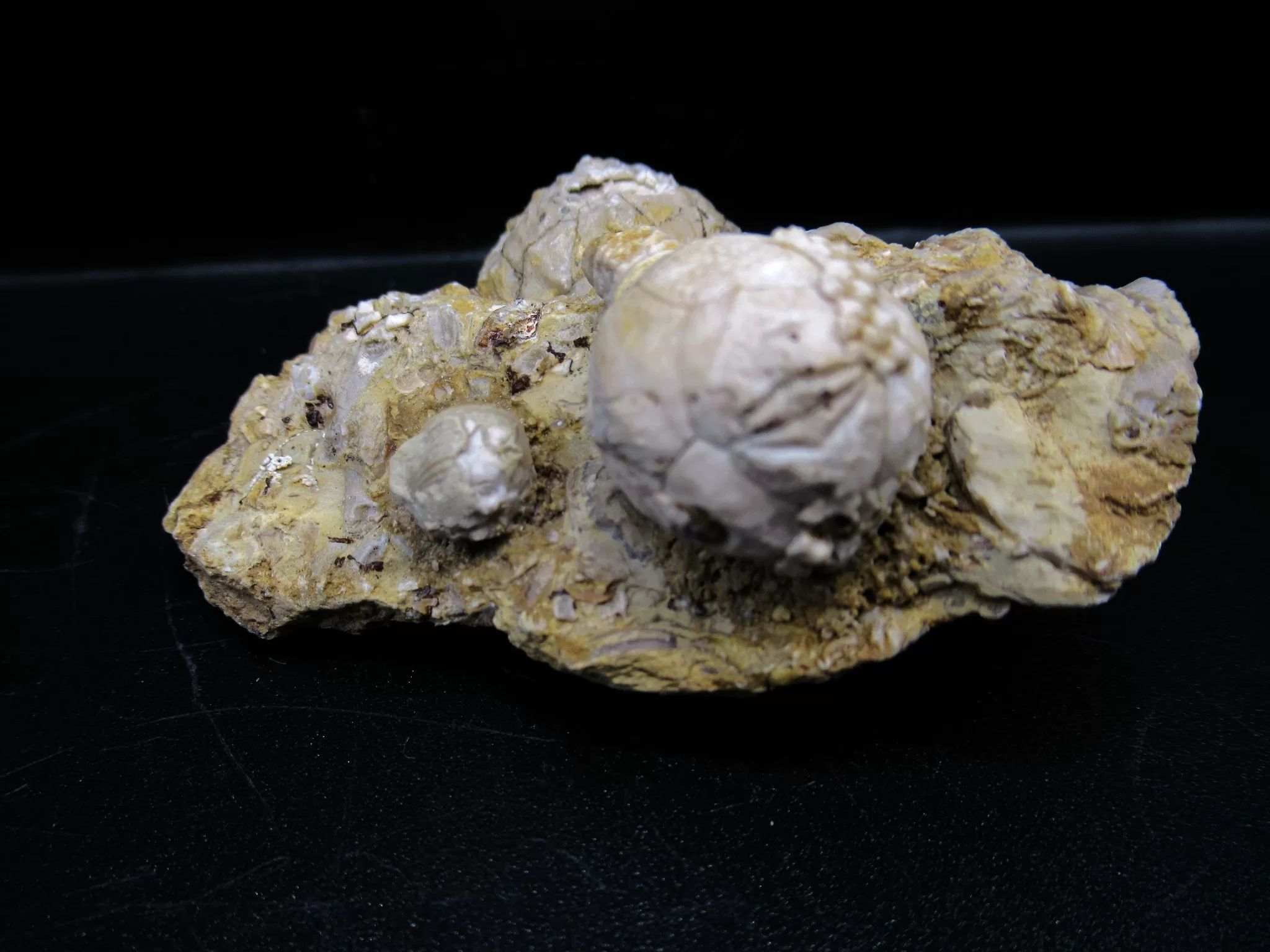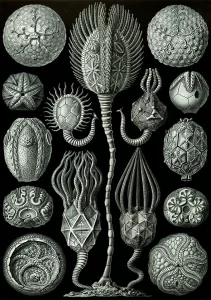Description
Strobilocystites calvini Cystoid
- Strobilocystites calvini – Cystoid
- Devonian Age
- Little Cedar Formation
- Palo Iowa
- This plate of rare cystoids has been meticulously prepared with micro pneumatic tools and micro air abrasives to reveal all the details. These specimens are all native to the matrix. If any specimen came off during preparation it was cleaned and placed back on the matrix. The overall size of the matrix is 1.89″ x 2.56″
- More Echinoderm Fossils for Sale
Strobilocystites is a genus of cystoid known from the Devonian of North America and was one of the late-surviving members of the group. These primitive echinoderms are normally found in Ordovician and Silurian rocks. Cystoids found in Devonian age layers are very rare and none are found in younger rocks.
WHAT IS A CYSTOID?
Cystoids belong to an extinct order of echinoderms from the Ordovician to Devonian Periods. Similar to crinoids, they had somewhat rounded, plated, bodies attached to a stalk that was anchored to the sea bottom.
Cystoidea or cystoids, is a class of extinct echinoderms in the sub-phyla Blastozoa, that lived attached to the sea floor by stalks. Superficially, cystoids resembled crinoids, but they had an ovoid, rather than cup-shaped, body.
The mouth was at the upper pole of the body, with the opposite end attached to the substratum, often by a stalk, although some stalkless species did exist. The anus lay on the side of the body. T
The most distinctive feature of cystoids was the presence of a number of pores in the rigid skeleton encasing the body. These were most likely respiratory in nature, allowing fluid to flow in or out of the body. In some species, the pores were clustered in distinct regions, but in others they were distributed quite widely over the body surface.
WHEN DID THEY LIVE?
They existed during the Paleozoic Era, in the Middle Ordovician and Silurian Periods, until extinction in the Devonian Period.
Cystoid, any member of an extinct class (Cystoidea) of primitive echinoderms (animals with a hard, calcareous external skeleton, related to the modern sea lily and starfish) that first appeared during the Middle Ordovician Epoch and persisted into the Late Devonian Epoch (the Ordovician Period began about 488 million years ago, and the Devonian Period ended 359 million years ago). Once diverse and important, the cystoids had saclike bodies that were attached to a stem anchored to the seafloor. Numerous plates covered the body. Some forms are important guide, or index, fossils and thus allow the correlation of sometimes widely separated rock units.









